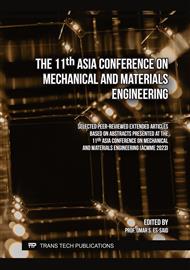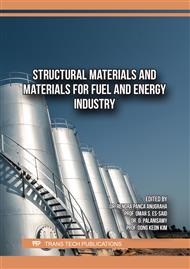p.97
p.107
p.115
p.123
p.135
p.145
p.151
p.159
p.169
Heat Transfer of Air-Water Flow in Wavy Microchannels
Abstract:
Effective cooling of the electronic devices is of great importance to their performance. Of particular interest is when the size of the equipment has scaled down to micro level. Despite a continuous improvement over the years, there is only a handful information on gas-liquid flow in wavy microchannels. This paper presents an experimental study of the air-water two-phase flow in a wavy microchannels heatsink typically used for cooling of electronic devices. The heatsink was made from copper with 26 wavy channels. The width and the depth of each channel were 800 and 500 μm, respectively. Two cartridge heaters were used to generate a constant heat flux. Pressure and temperatures of the working fluid at the inlet and outlet of the test section were measured using a pressure transducer and thermocouples. To evaluate the benefit of using the wavy microchannels, experiment was performed using water as the working fluid. The results showed that the wavy microchannels could elevate the Nusselt number by up to 112% compared to that obtained from the straight microchannels. Experiments at various air and water flowrates in the wavy microchannels suggested that the advantages of using the air-water flow would be obvious at the liquid Reynolds number above 379.
Info:
Periodical:
Pages:
169-175
Citation:
Online since:
December 2023
Authors:
Keywords:
Price:
Сopyright:
© 2023 Trans Tech Publications Ltd. All Rights Reserved
Share:
Citation:



